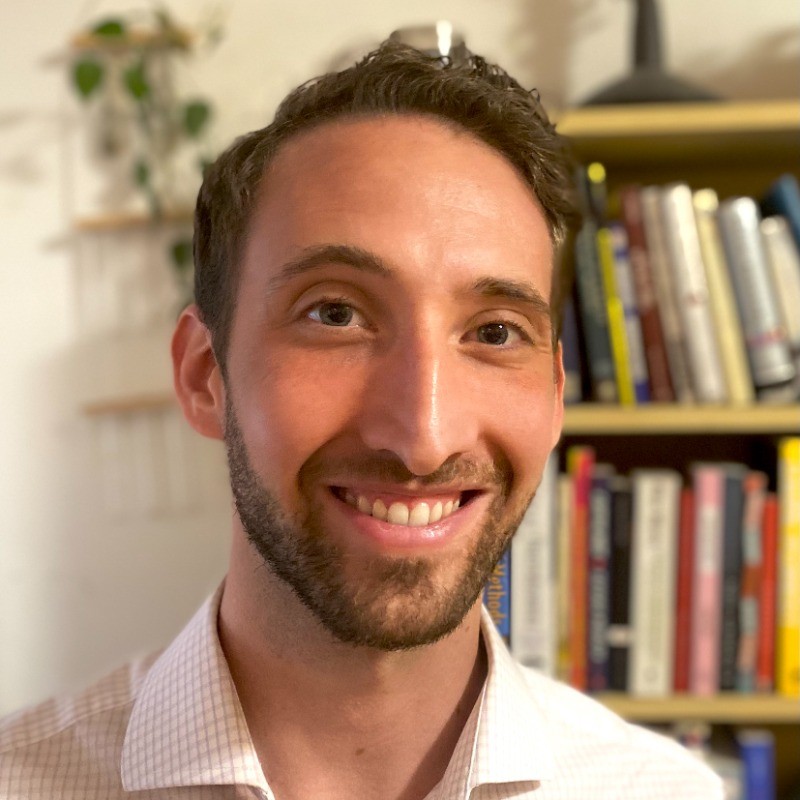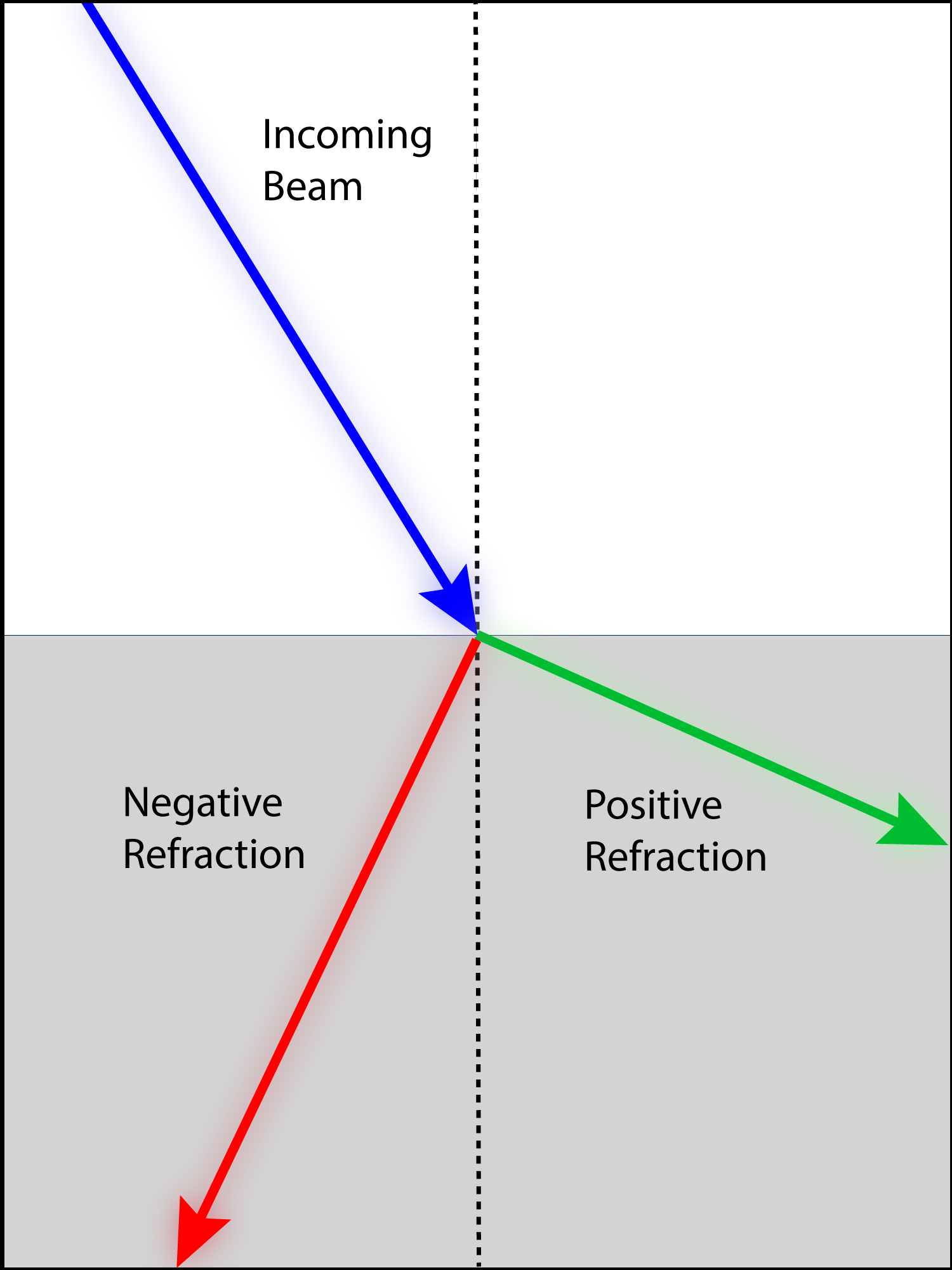Aaron Sternbach, a new assistant professor in the Department of Physics at the University of Maryland, is an expert in combining light and material properties to produce unique results. His experiments have allowed him to spy on elusive quantum interactions that play out on extremely small and fast scales.
“I study quantum materials with light,” Sternbach said. “When I encounter something I can’t see with light because of common ‘limits,’ I study the physics behind these limits and try to push them further. That is a really fun part of the job. In some cases, that approach can lead to new opportunities.”
Since he was a kid, Sternbach enjoyed math and physics. But even as he enrolled to study physics as an undergraduate at Boston University, he wasn’t certain that he wanted to pursue a career in physics. During his freshman and sophomore years, he worked in an astrophysics lab where he spent most of his time helping design measurement devices. But after almost two years of work, his efforts hadn’t produced a physical device. The project wasn’t progressing at a pace he found satisfying, so he considered switching majors to study medicine in his junior year.  Aaron Sternbach
Aaron Sternbach
That changed after he spent his summer working in physicist Richard Averitt’s lab. He assisted with an experiment that used light to manipulate the electrical properties of a quantum material. In the project, light drove the material from being a poorly conducting insulator to an electrical conductor. Achieving the transition required focusing the light into a smaller spot than is possible using lenses or other common techniques. Instead, it required taking advantage of the material’s structure.
A material’s response to light is dictated by its internal structure, and the project was looking at just one of the countless possible materials that scientists can find in nature or deliberately engineer. Sternbach became hooked on physics when he started to explore simulations of materials as part of the project, and he never looked back.
"I found it fascinating that engineering light could totally change the properties of a quantum material," Sternbach said. "I started playing with all sorts of simulations to try to understand how far this approach could go."
He started to wish he could watch the transitions between insulator and conductor in experiments as they played out in real space and real time. In 2013, that desire led him to graduate school at UC San Diego, where he joined the lab of Dimitri Basov. Basov had recently been investigating new techniques that used material properties to focus light into unusually small spots. His early results showed that the approach could be useful for observing and learning about quantum materials. In the middle of his graduate studies, Sternbach moved to Columbia University when Basov relocated his lab there.
Working with Basov, Sternbach helped develop a new observation technique that can observe very quick changes while also getting around a rule in physics called the diffraction limit. The diffraction limit is the inevitable result of the way that waves, including light, spread—diffract—when they pass the edge of an object and then keep spreading as they travel. For devices that use lenses and apertures to manipulate light, the diffraction limit imposes strict constraints both on the smallest spot a beam of light can be focused into and on the smallest features that the device can be used to clearly distinguish. However, by using the structure of a material to continually influence light, researchers can circumvent the diffraction limit and build new tools for manipulating and observing the microscopic world.
The observation technique that Sternbach helped develop simultaneously uses the material’s structure to herd light along paths that beat the diffraction limit and uses very short flashes of light to accurately capture quickly unfolding events as they play out over time. To get clear snapshots of rapidly changing experiments, the team used extremely short flashes of light, providing a clear view of brief periods instead of capturing a blurry image like an overexposed photograph.
“Learning to interact with data and gaining an intuition for what you're seeing is like learning a new language,” Sternbach said. “You learn fantastic approaches to see parts of the world that are way beyond a native human scale.” During positive refraction (green) the path of incoming light (blue) will bend, but it will never cross the dotted line perpendicular to the interface of the two materials. In rarer circumstances, called negative refraction (red), the light sharply turns and continues on the same side of the dotted line. (Credit: Bailey Bedford, UMD)
During positive refraction (green) the path of incoming light (blue) will bend, but it will never cross the dotted line perpendicular to the interface of the two materials. In rarer circumstances, called negative refraction (red), the light sharply turns and continues on the same side of the dotted line. (Credit: Bailey Bedford, UMD)
As part of his graduate work, Sternbach got to apply the technique he’d developed to observe materials transforming in real space and in real time after light was used to initiate a change.
After completing his degree, he continued to work with Basov as a postdoctoral researcher. In a new project, they incorporated an additional way that light and matter can interact. They studied polaritons—particle-like combinations of light and matter with characteristics of both. Since the matter portion of a polariton contributes mass, polaritons behave more like matter than normal light: They can carry significantly more momentum than light and can be more tightly confined into a beam than freely propagating light.
Sternbach and his colleagues wanted to observe a particular type of polariton, called a hyperbolic polariton, that travels through the bulk of a material along a specific type of constrained path. In an article published in the journal Science in 2021, the team shared how they created polaritons by hitting a layered material with a pulse of light and then used their new technique to observe polaritons and follow their journey through the material. Their measurements revealed details about quantum states that were crucial to the polaritons’ existence and that only existed in the material for trillionths of a second.
Following that experiment, Sternbach and his colleagues studied hyperbolic polaritons that moved between two different adjacent materials. They investigated two naturally occurring materials that were known to produce polaritons and revealed that a polariton’s path would bend in an unusual way as it passed across the interface between the two materials.
Normally when light travels between two materials, such as water and air, its path bends slightly based on the fact that it travels at different speeds in each material. This bending of light—called refraction—is why a straight straw placed in a glass of water looks like it bends at the interface.
In an article published in the journal Science in 2023, Sternbach and his colleagues showed that when they properly oriented the two materials, the polaritons at the interface didn’t refract normally.
Most materials produce positive refraction, where light is deflected a bit but is limited in how far it can swerve to either side. Positive refraction is similar to a simple dive into a swimming pool: The diver’s direction will change some when they move into the water, but as they continue down, they also keep moving forward.
Sternbach and his colleagues observed their polaritons bending in a more drastic way, called negative refraction. During negative refraction, a beam almost does a U-turn. While it continues down into the new material, it also travels backwards, like a diver who instantly makes a sharp turn as they hit the water so that they end up under the diving board instead of in front of it.
The team’s experiment revealed that producing negative refraction in the experiment depended on getting the top layer turned at just the right orientation to the bottom layer. The team went on to use negative refraction to create a tiny container for trapping light. They demonstrated that when the polaritons were reflected at the exposed surfaces of each material, the negative index of refraction allowed the polaritons to become stuck in a loop that is much smaller than the wavelength of the light outside the materials.
Now that Sternbach has joined UMD, he plans to continue this line of research in his own lab, where he hopes to create a supportive environment for students. He is currently looking for new students to join him in exploring quantum materials and the complex interactions that can be engineered between light and matter.
“I always felt that exploring curiosities and doing things that I really enjoyed doing was enough,” Sternbach said. “And I think that was a good rule of thumb. It's allowed me to explore this direction, which is basic research, freely and grow in whatever direction nature allows. I'm very excited to see where this goes in the future at Maryland.”
Story by Bailey Bedford
The Sternbach group is always looking for exceptional graduate and undergraduate students as well as postdoctoral researchers who wish to join the team. Those interested may reach out to him by email at This email address is being protected from spambots. You need JavaScript enabled to view it..